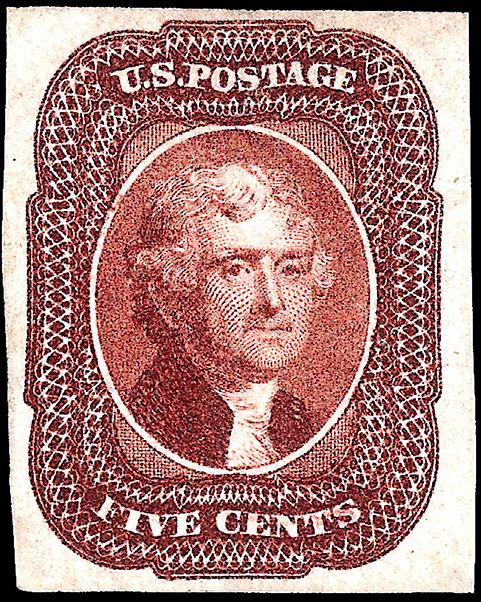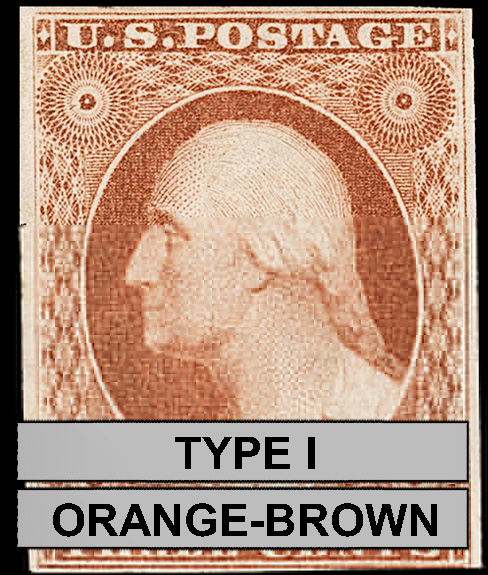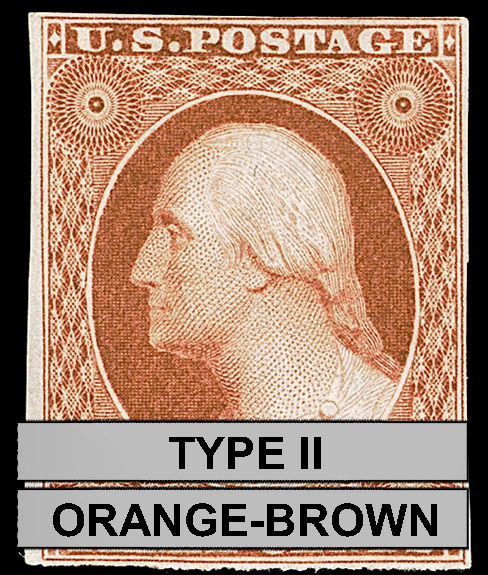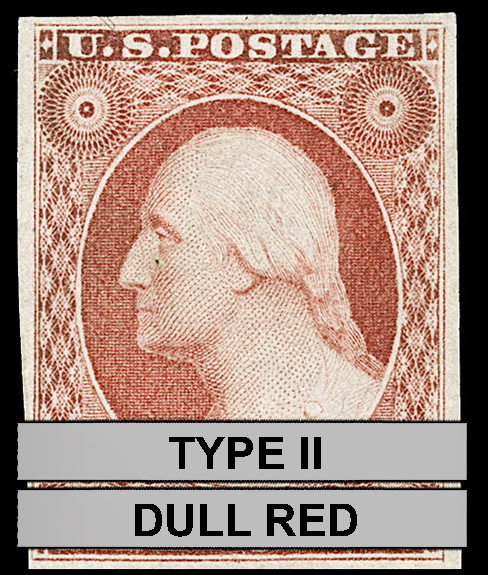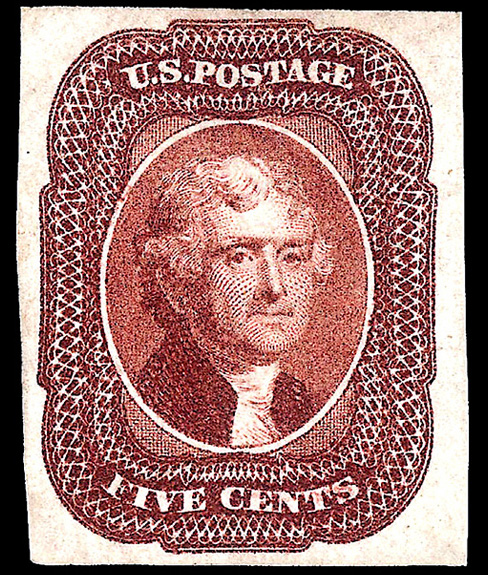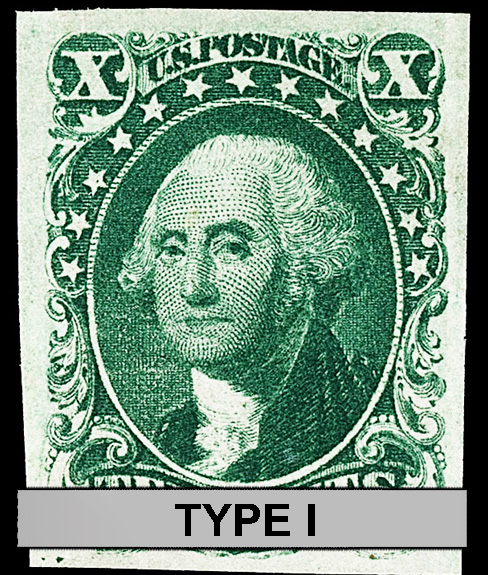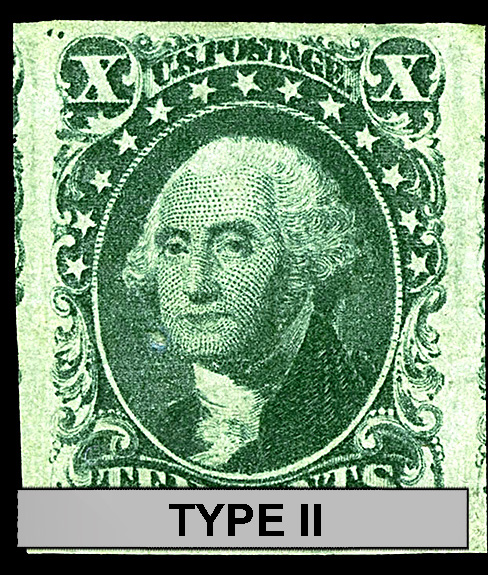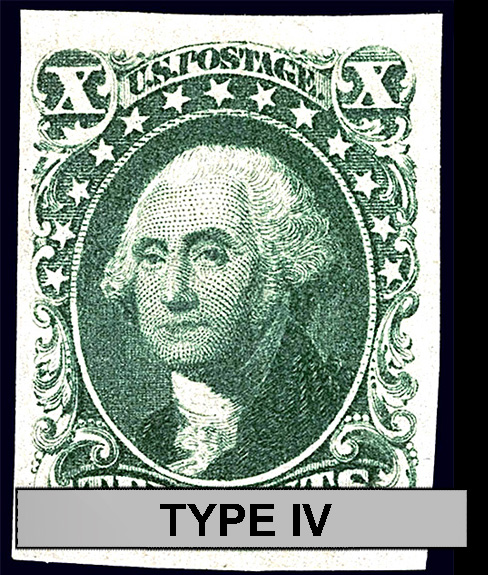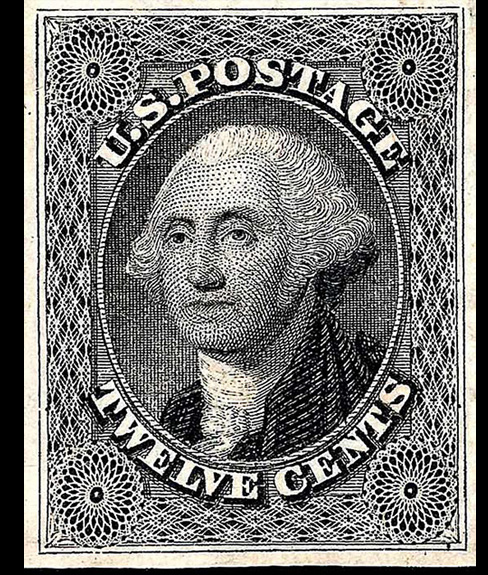Basic Info
5¢
Red brown or dark red brown
Printing Method: Die-to-relief-to-plate transfer process
Plate: plate 1
Printer: Toppan, Carpenter, Casilier & Co.
Subject: Thomas Jefferson
Number issued: 150,000
Perforations: Imperforate
Watermark: Unwatermarked
Scott #: 12
Issued: March, 1856
Value
Used
$300 - $400 (four margins)
No postmark with gum (MH)
$2,500 - $7,500 (four margins)
Full perfect gum, no postmark
no trace of stamp hinge mark (MNH)
No sales recorded
Inspiration for the Design
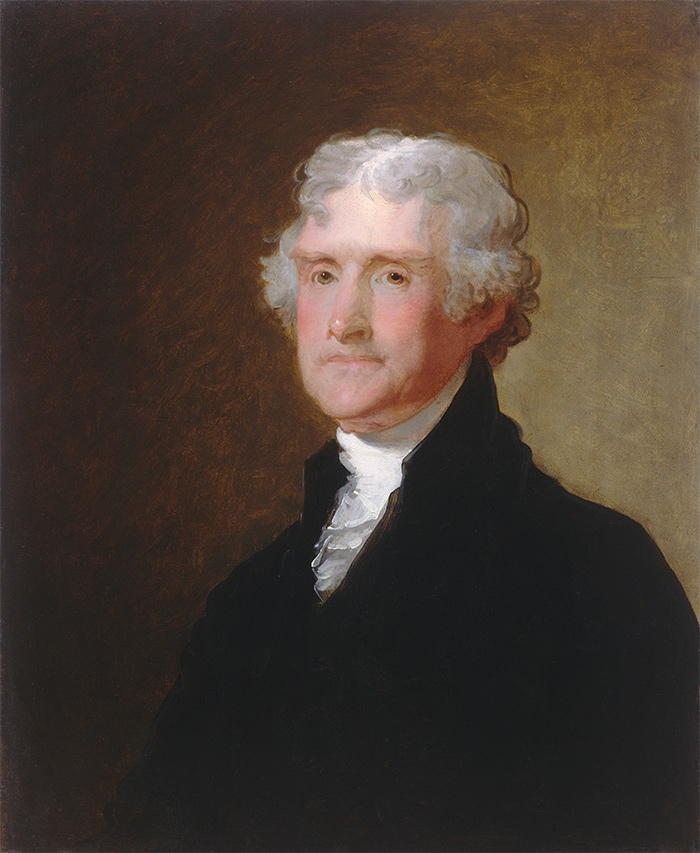
Thomas Jefferson
Gilbert Stuart, 1805
Source image for the design of the vignette
The Imprint

Along the side margin of the sheet can be found the Printers imprint
Fakes
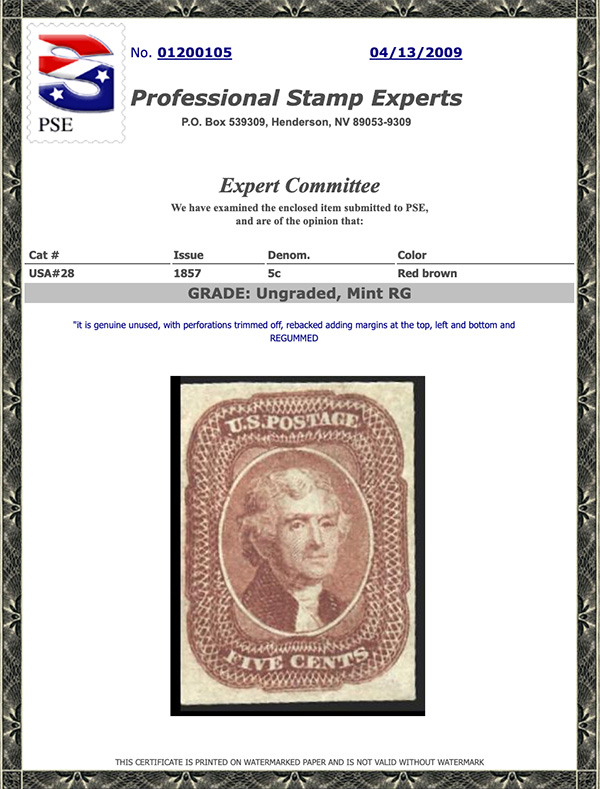
Narrow margins can be indicative of a #28 with its perforations trimmed off to appear as if it is a #12
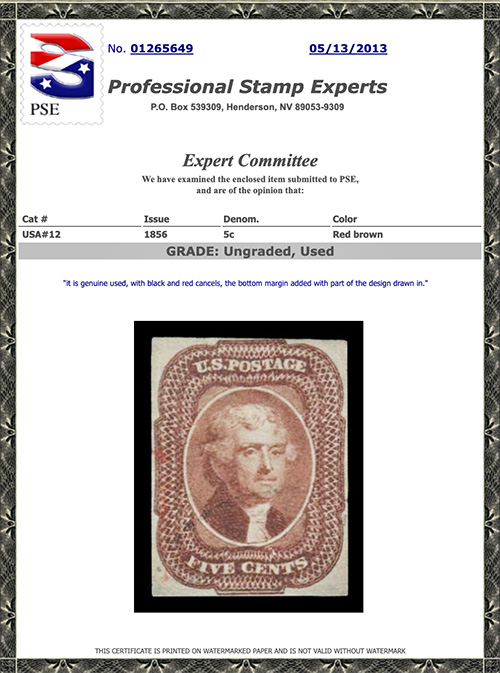
Four protrusions on each side of the frame are the most desirable examples. Most #12's have three protrusions or less, due to poor centering. It is fairly common to see margins added and a potrusion drawn in.
Usage
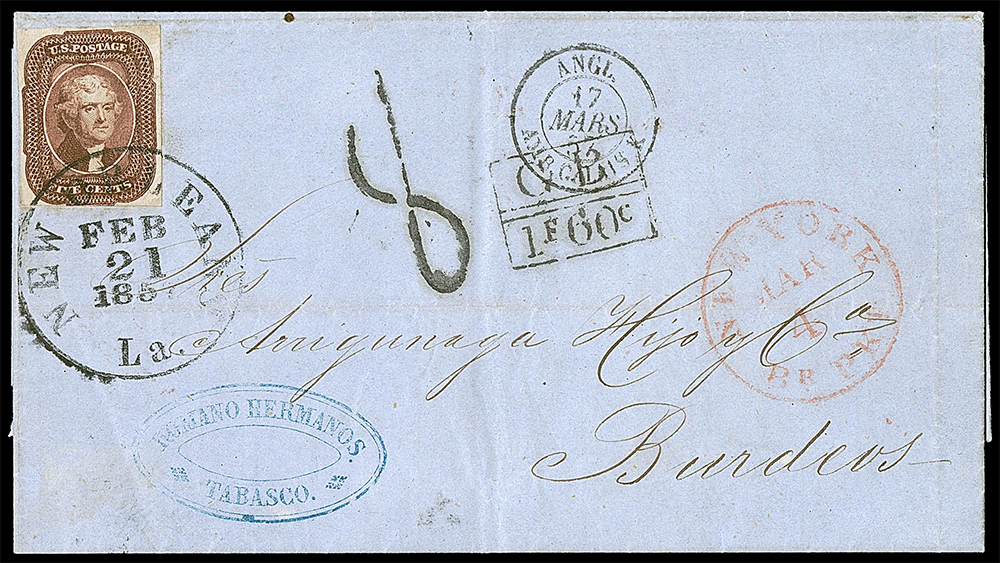
A New Orleans postmark on a cover to France
Not issued until 1856 when the postal rate for a registered ½ oz letter abroad became 5¢. This was the "ship to shore" rate and was supposed to be paid by cash, however the use of stamp was not required. As a result one wonders why the 5¢ stamp was ever issued, there being no obvious need for it.
A large portion of #12's on cover (of which only 350 exist) were addressed to Europe. Non-European destinations command a premium. Because most of the stamps were used in New Orleans it can be expected, due to New Orleans french heritage, that a large portion of the covers are addressed to France, so it
follows that when the cover is addressed to European countries other than France, there is a slight premium.
The stamp was unevenly distributed to post offices, being issued just before the perforated variety in 1857. The overwhelming majority of the stock being sent to New Orleans, with a small amount being sent to Boston. Any postmark not showing these cities also commands a premium, as long as the postmark is legible. Grid postmarks also command a premium. Any domestic use of the 5¢
commands a premium as well. Because multiples of three were commonly used to pay the higher 15¢ foreign destination rate, they do not command as higher a premium as one would expect.
The story behind its creation

A French homage to Thomas Jefferson
At the time of issue there was no good reason to have a 5¢ stamp. There simply was no 5¢ rate, unless you were sending the ship to shore rate to France. Yes, France, where Thomas Jefferson gained popularity with the French while ambassador there. Which may also explain why his portrait was chosen for the vignette of the stamp. Even though prior to this stamp only the busts of Washington and Franklin had been used for the vignettes.
Defective transfer
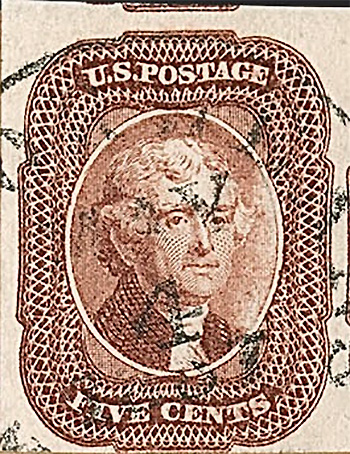
Position 23R1, under inked to the right of Jeffersons head

